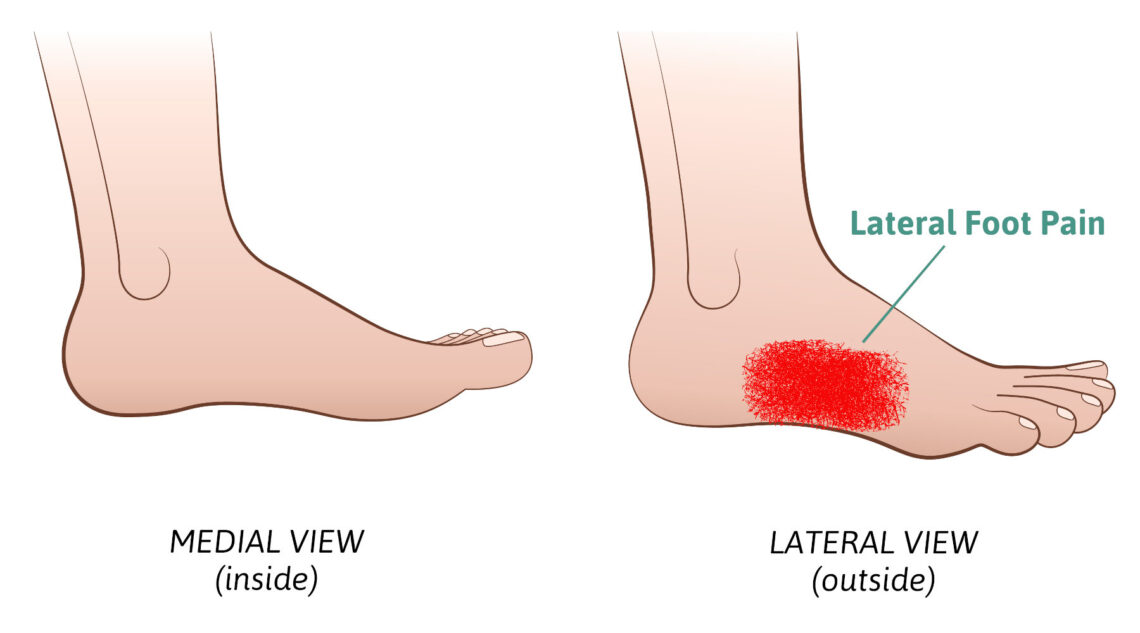
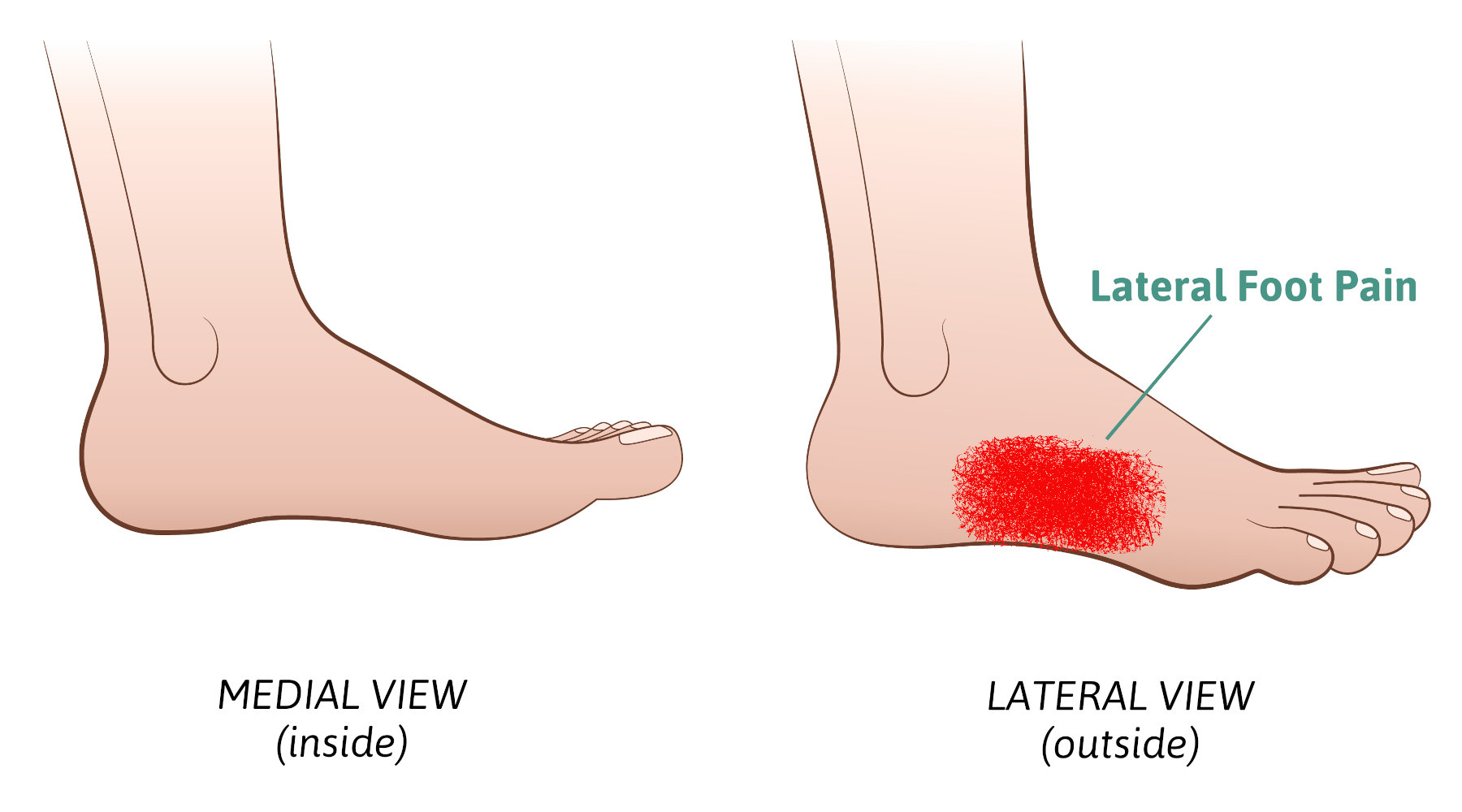
Lateral foot pain refers to the pain being on the outer side of the foot. This means anywhere from the small toe joint back to the heel bone area. Any pain that is along the outer edges of the foot. This blog will review many problems that can arise in this region of the foot. However, before we get started it’s important to point out that lateral foot pain in many cases may be related to a problem elsewhere in the foot. This other issue is creating a situation where you have difficulty walking and favor the painful area by rolling your foot towards the outside. This may create stiffness and pain in the lateral foot. So as a foot specialist I’m always looking to find in the patient’s story, their history, was there some other type of pain that preceded the lateral foot pain. Here are six things that cause lateral foot pain and treatment options.
- Cuboid syndrome – This pain is usually associated with the calcaneal cuboid joint. This joint lies on the outside of the foot at the highest part of your arch on the lateral side of your foot. The history of plantar fasciitis is commonly associated with cuboid pain. By favoring the foot and walking on the outside of the foot the reducing the pulling of the plantar fascia from the bottom of the foot and thus significant stress is placed in this area. AS the heel pain is reduced the cuboid pain increased. Treatment therefore should start by addressing and eliminating the heel pain and the cuboid pain will fix itself.
- Peroneal tendonitis – The peroneal tendons lie on the outside of the foot coming from behind the fibula bone and then coursing on the outside of the heel One these tendons, the peroneus brevis’s attaches to the base of the fifth metatarsal, the large eminence that protrudes halfway between the ball of your foot and the heel. The other tendon, peroneus longus runs beneath the arch and attaches to the base of the first metatarsal bone and helps to pull this bone downward to support the medial arch. Basically, both tendons are like stirrups helping to stabilize the foot from moving side to side. Any activity that requires along side-to-side motion can stress these tendons and, in some situations, they can develop tears. Flat feet may also contribute to peroneal tendonitis. We have found that human cellular tissue products are a great option to help repair these tendons so surgery can be avoided.
- Fractures – Fractures of the heel bone cuboid bone or fifth metatarsal can all cause pain in this area. Of these three fifth metatarsal bone fractures are the most common.
- Fifth metatarsal bone fractures – these are usually associated with an ankle sprain where the twist is so forceful the peroneal brevis bone that attaches to the base of the fifth metatarsal pulls a portion of the fifth metatarsal away from the rest of the bone. This is referred to as an avulsion fracture. The other type of fracture referred to as a Jones fracture occurs when upward force is placed primarily on the fifth metatarsal and not the other metatarsals causing the bone to fracture just behind the base of the bone. An example would be a basketball player landing on another player’s foot with all the body weight on the fifth metatarsal. Both these fractures require immobilization in a cast or Cam-boot and the probability of surgery to repair the fracture is more common with the Jones fracture.
- Cuboid fractures – This bone is between the heel bone and the fifth metatarsal. Fractures here are very uncommon and may be associated with trauma but more likely may be caused from overuse.
Treatment for lateral foot pain is usually immobilization
- Calcaneal fractures – The calcaneus is your heel bone and fractures can occur from trauma such as a fall and when severe may require surgery. However, in most cases overuse can cause stress fractures the heel. The heel bone is very vascular, so the bone tends to heal very well.
- Sinus tarsi syndrome – This is very common and is associated with the subtalor joint. This joint lies beneath the ankle joint and is the joint that allows your foot to move like a universal joint on a care. In all different body planes. There are two ligaments in the joint that are thought to become inflamed from overuse or trauma such as an ankle sprain. It’s not uncommon for someone to report an ankle strain weeks or months ago but the pain may linger in this location. Treatment with cortisone injections and custom-made arch supports called orthotics successfully eliminates the pain.
- Sural nerve pain – This is a nerve that originates in the lower leg and travels down the side of the foot to the small toe. This nerve can be irritated. By a multitude of different types of traumas including, Surgery with an incision being placed on the outside of the foot or ankle. From an ankle strain causing the nerve to be stretched. Surgery or trauma such as being kicked in the lower leg. Treatment may include, cortisone injections, laser treatments and when pain is severe and conservative measures fail, surgery removal on the nerve in the leg and burying into muscle to prevent regrowth.
- Great toe joint pain – This requires its own special category as any pain in the great toe joint area will cause you to walk differently. Because normal ambulation requires a significant amount of body weight to be transferred onto the great toe joint, anything that alters the normal gait pattern can cause significant lateral foot pain. This would include the following
- Bunion pain – this occurs when the great toe angulates towards the second toe and a bump is created at the base of the great toe joint. Shoes will cause irritation to the bump.
- Sesamoiditis – There are two sesamoid bones the sit beneath the great toe joint and function like the kneecap to improve the strength of the muscles that pull your great toe down. This can become painful for many reasons. Again, you’ll tend to reduce the load on these bones and transfer your weight laterally.
- Hallux rigidus – Hallux refers to the great toe and rigidus refers to great toe joint having limited motion. When the great toe cannot move up adequately for normal gait you’ll have to transfer weight to the outside of your foot. Treatment for all three of these conditions may include custom made arch supports, orthotics, to reduce pain and improve function. Cortisone injections. Human cellular tissue products to reduce joint pain for Hallux rigidus, see our video below. Or surgery is another way to correct the problem.
Treatments for lateral foot pain
- In the early stages taking anti-inflammatories and physical therapy may help reduce swelling along with an elastic bandage early on.
- Reduction of physical activity may also be useful.
- Use of shoe inserts may be useful in a treatment plan..
Final thoughts. So, if you’ve been dealing with lateral foot pain and are not sure what it is and what treatment choices you must consider consulting with a foot and ankle specialist. Finally remember you could be wasting a lot of time and money treating lateral foot pain that is failing because it never was the primary problem. Give us a call at one of our local foot and ankle clinics in Fort Collins and Broomfield. We see patients searching for ‘the best foot doctor’ from all across the tri-state area, such as Wyoming, Cheyenne and Loveland. With over 10600+ views on Youtube and a large Facebook community, we are always looking to provide real solutions for all our patients foot ailments.
Schedule an Appointment
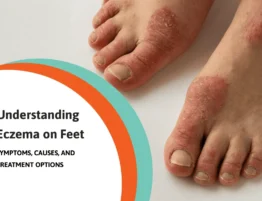
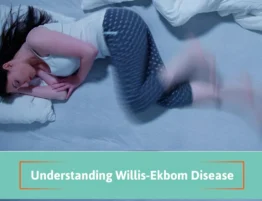
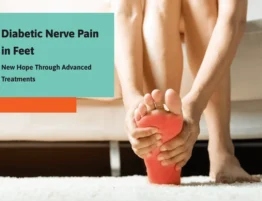
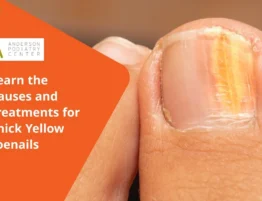
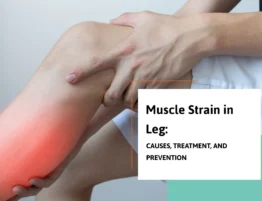
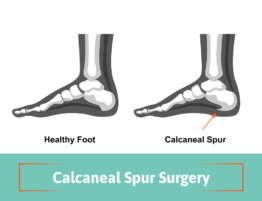
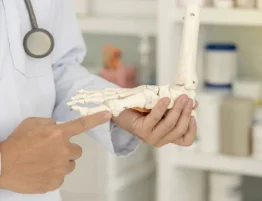
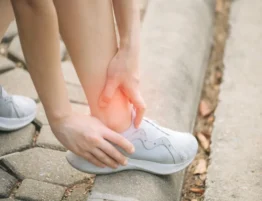
Write a comment: